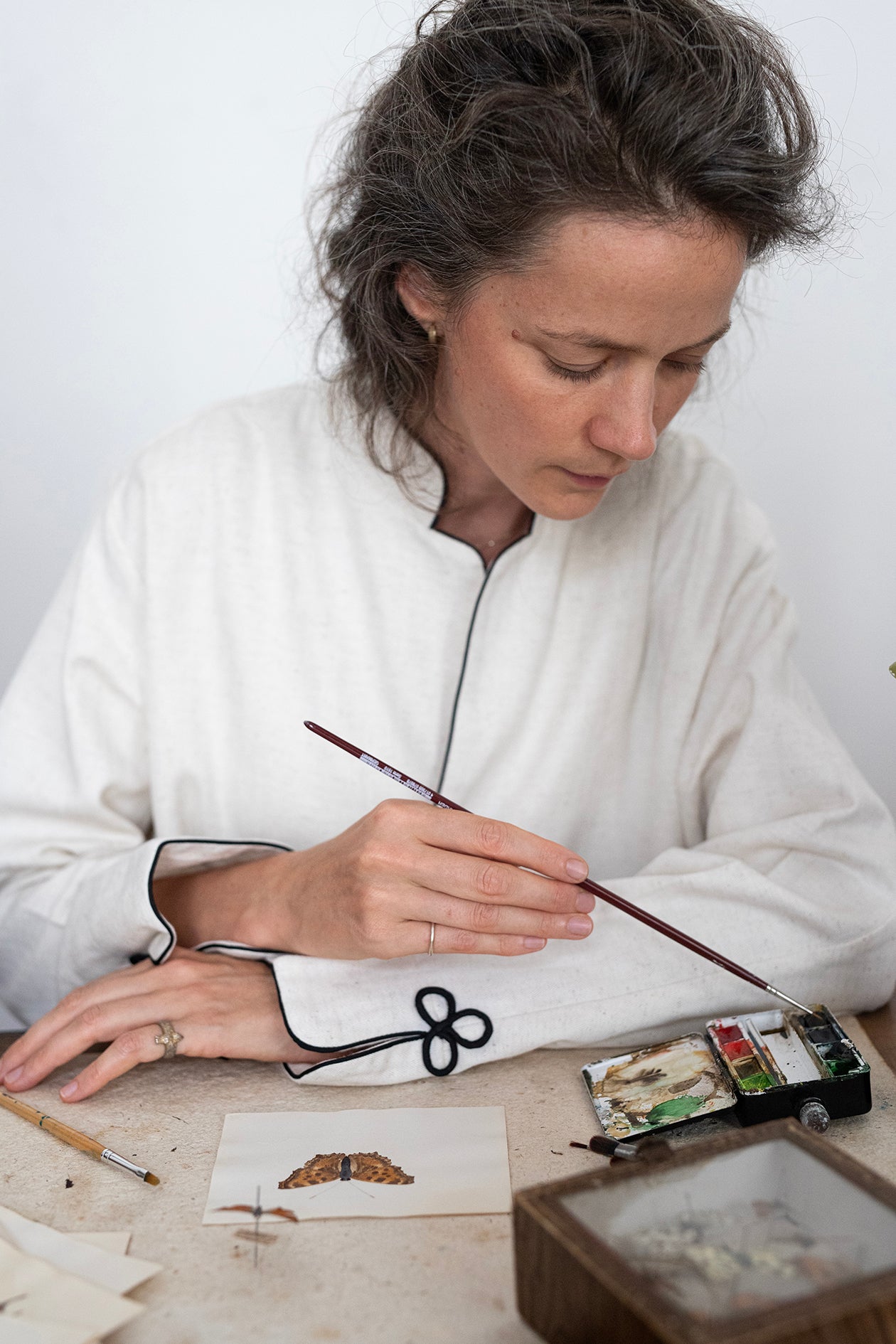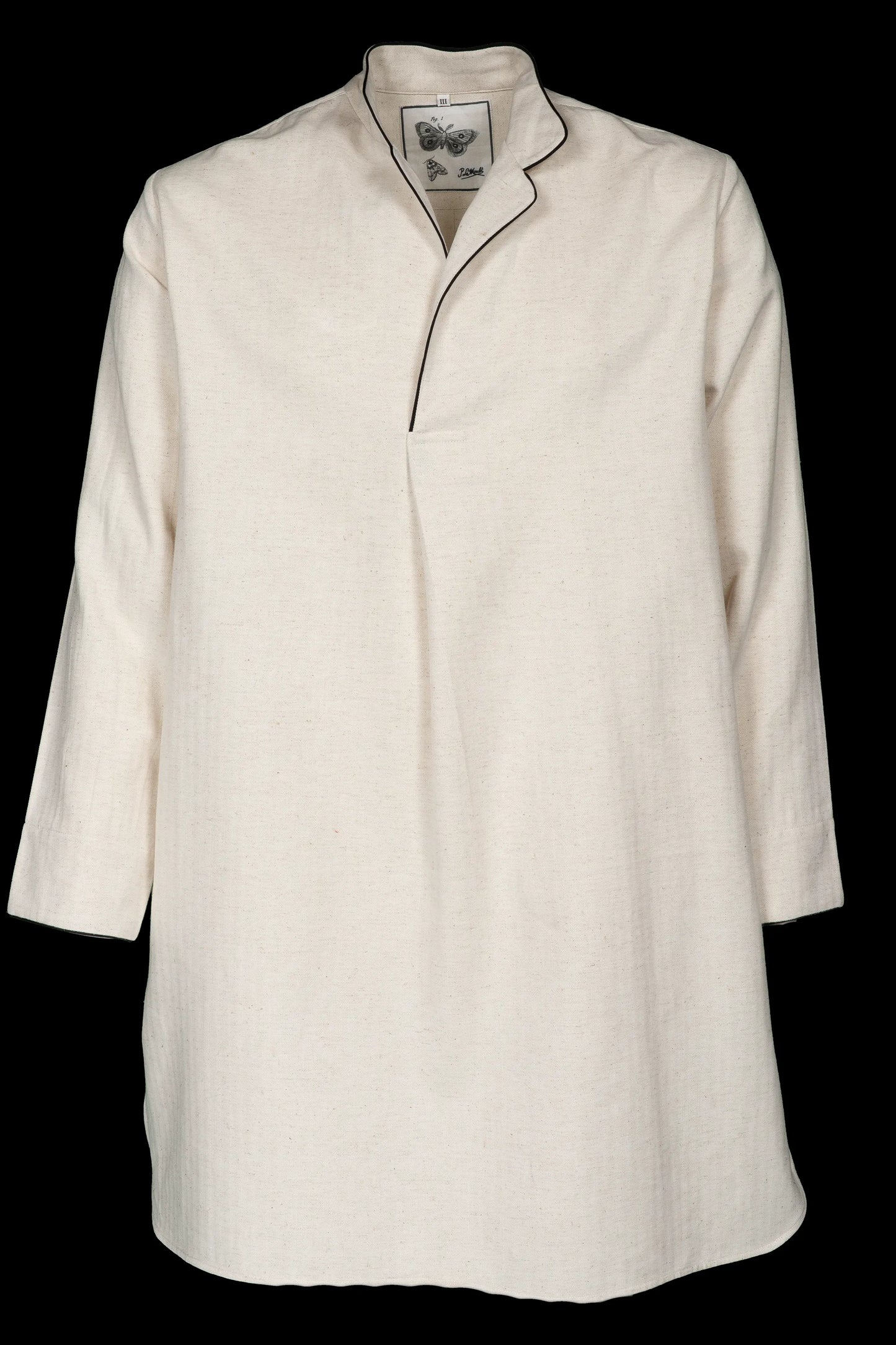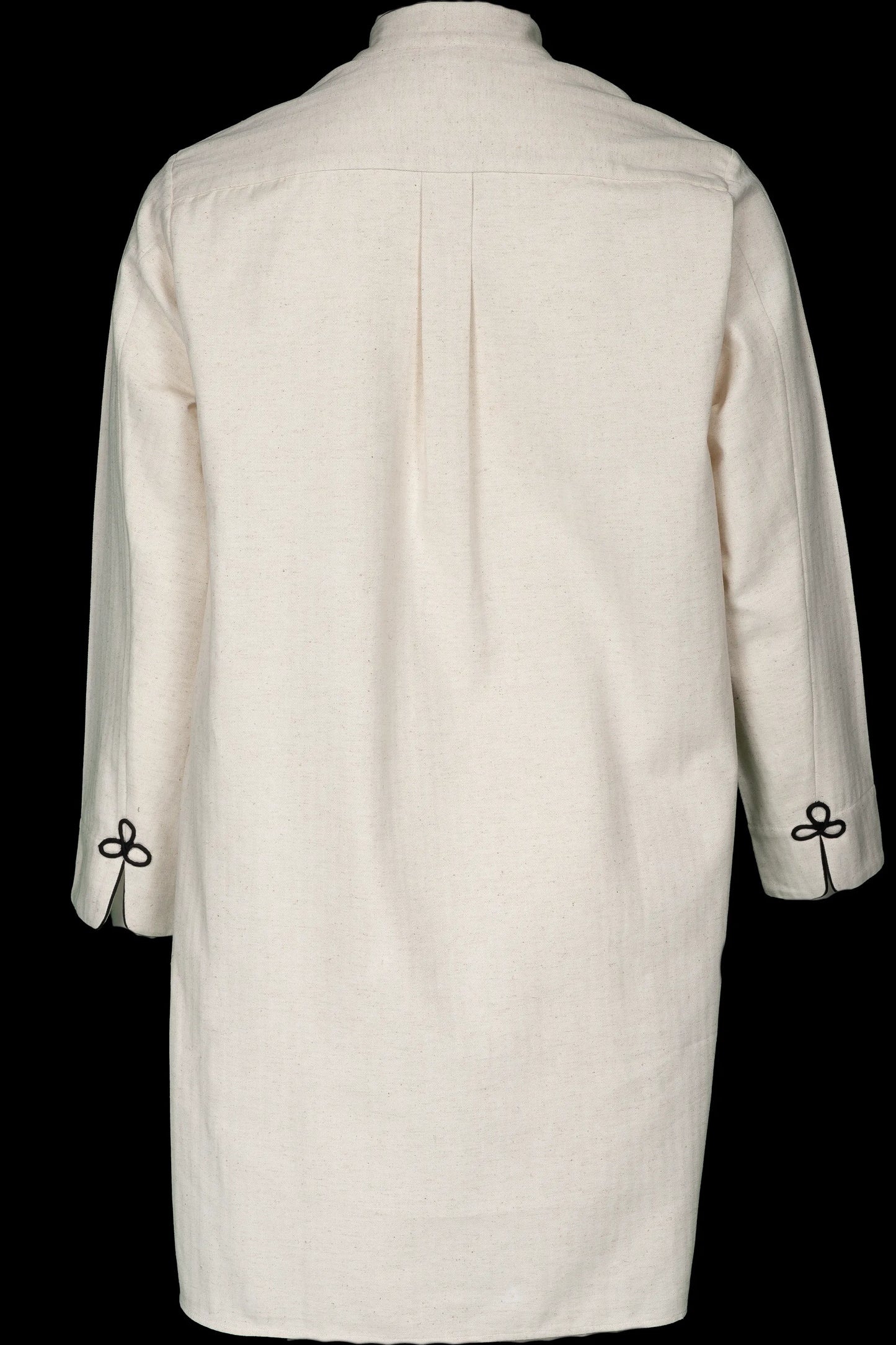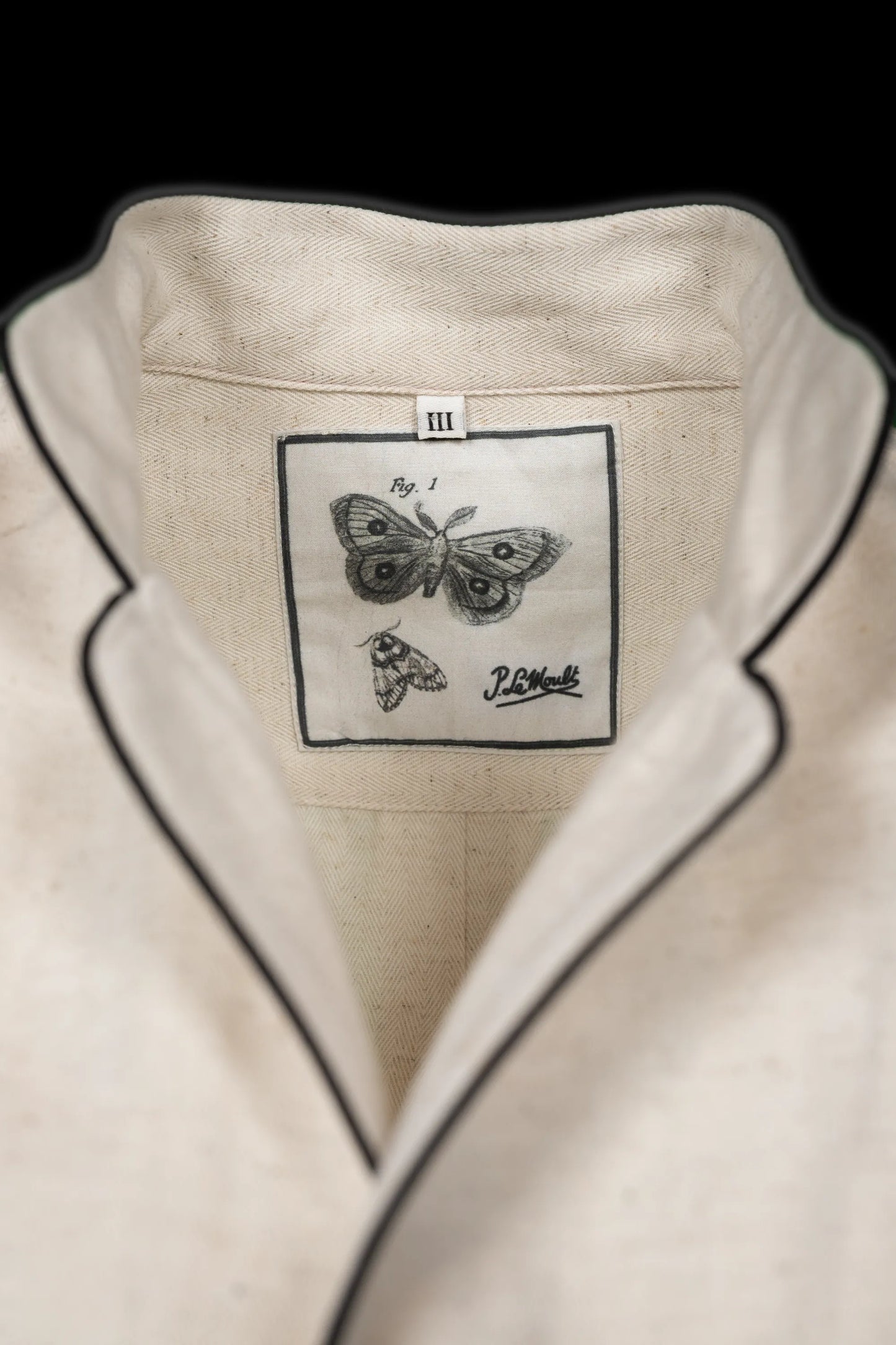NIGHT-SHIRT
NATURAL-Black with black braiding
100% COTTON Herringbone-Thick, Brushed-inside
NIGHT-SHIRT NATURAL-Black with black braiding 100% COTTON Herringbone-Thick, Brushed-inside
Couldn't load pickup availability
Knee-length shirt with standing collar, no buttons, and piped edges. The straight cut gave ventilation, while the collar sat flat against the neck. Today it remains a light house garment or summer layer. In French Guiana, where Eugène Le Moult grew up, night-shirts of this cut suited the equatorial heat and humidity, covering the body while allowing air to circulate in conditions where heavy European textiles were impractical.
French Guiana lies directly on the equator. Heat above 30 °C, humidity near saturation, and frequent rainfall shaped daily life. Clothing had to balance coverage with breathability, and night-shirts offered a practical solution. Their light construction allowed comfort where European dress of the time, designed for colder climates, would have been unsuitable.
We found the NIGHT-SHIRT in the wardrobe of dad's grand-dad, the WORLDS's №1 butterfly hunter
handrolled Piping, a decorative trim or embellishment, originated in 19th century. Initially used in military uniforms for distinction, it became popular in civilian wear for its sharp, tailored look
& handrolled Frogging, originated in 17th-century Europe and was initially used on military uniforms for decorative and practical fastening purposes
You can also buy this at BON BOUTIQUE
DETAILS
DETAILS
handrolled Piping, a decorative trim or embellishment, originated in 19th century. Initially used in military uniforms for distinction, it became popular in civilian wear for its sharp, tailored look
& handrolled Frogging, originated in 17th-century Europe and was initially used on military uniforms for decorative and practical fastening purposes
Our article number:9088
MATERIAL
MATERIAL
100%ᴾᵁᴿᴱ Southern-Indian COTTON (as in the 𝑜𝑟𝑖𝑔𝑖𝑛𝑎𝑙 heritage sample, made from fabric woven before 1947 in then British-India )
• from fields SUSTAINABLY growing cotton since at least 35AD (according to Roman Empire trade records)
• woven as in the 𝑜𝑟𝑖𝑔𝑖𝑛𝑎𝑙 HERRINGBONE-THICK weave to P.Le Moult designs in nearby villages by English-speaking unionized craftspeople, descendants of the 𝑜𝑟𝑖𝑔𝑖𝑛𝑎𝑙 weavers (in a state that has been alternating between soft-Left and hard-Left coalitions since 1957...)
STYLE
STYLE
Ocean-liner decks were exposed to wind, spray, and humidity. Le Moult’s cases of butterflies travelled in these conditions on repeated voyages.
HERITAGE
HERITAGE
LÉOPOLD LE MOULT, PIONEER OF FRENCH ORGANIC 1856-1926 : we inherited grandad's grandad's ideals
EUGÈNE LE MOULT, BUTTERFLY-HUNTER 1882-1965 : we inherited dad's grandad's wardrobe contents
CREATOR
CREATOR
EUGÈNE LE MOULT (31 December 1882, Quimper – 26 January 1965, Paris) was as famous for hunting butterflies as he was for his custom-made wardrobe. He had these clothes tailored for himself to wear on the ocean-liner to South America, and when hunting and sleeping in the jungle.
Share








